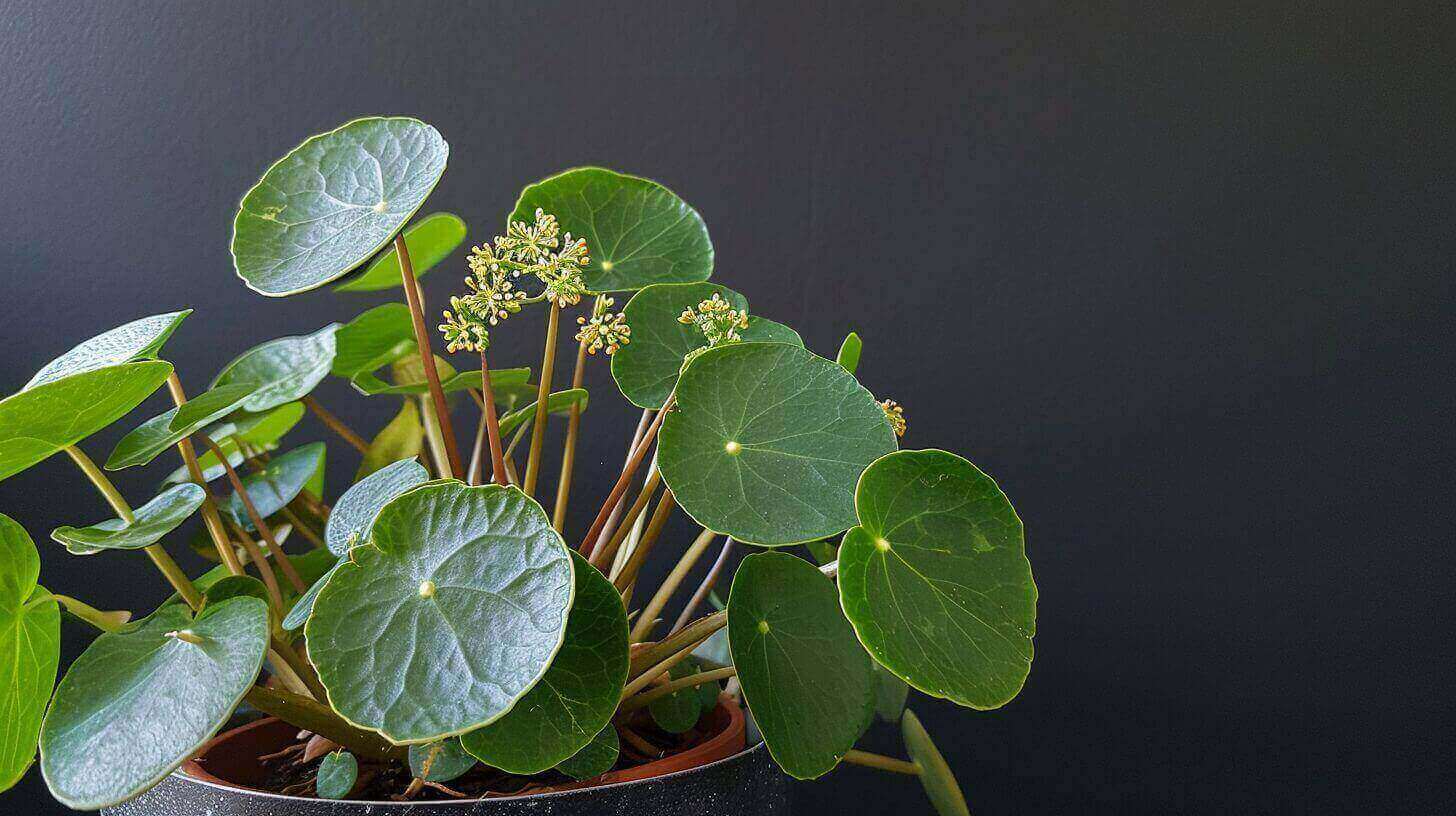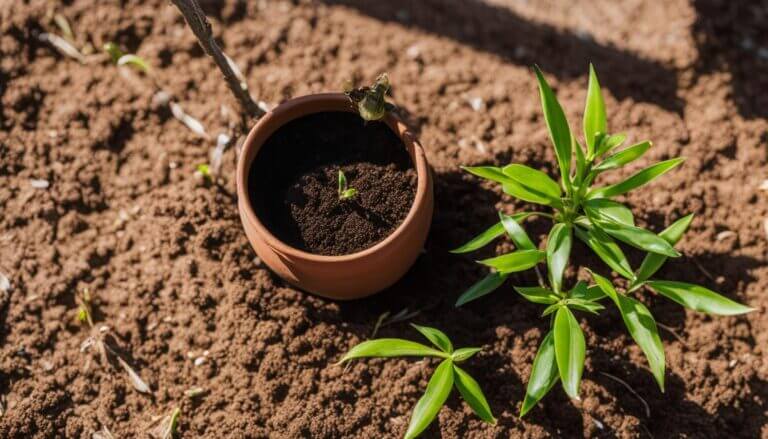Chinese Money Plant: What Does a Pilea Peperomioides Flower Look Like?
The Pilea plant, also referred to as the Chinese money plant, has the potential to bloom, although it is not a common occurrence. When a Pilea plant blooms, it is a sign that it is prepared for reproduction. Some Pilea plants are monoecious, meaning they possess both male and female flowers, while others are diecious, having separate male and female plants
Key Takeaways:
- The Pilea peperomioides, or Chinese money plant, can bloom but it is not a frequent occurrence.
- Pilea plants may have both male and female flowers or separate male and female plants.
- Propagation through offshoots is the most successful and reliable method for cultivating new Pilea plants.
- Encouraging blooming can be done by exposing the plant to colder temperatures in a bright indirect light environment.
- Pilea blooms are initially bright green and may later turn white or pale pink.
- Pollination can result in the formation of seeds, but germination can take up to 30-40 days.
- Offshoots are the preferred method of propagation due to their ease and efficiency.
What Does A Pilea Peperomioides Plant Flower Look Like
Here’s a description of what the flowers look like on a Pilea peperomioides (Chinese money plant):
- The flowers are tiny and produced in elongated, branching clusters emerging from the soil called inflorescences.
- Each small flower has five pointed petals that are white to pale pink in color.
- The petals spread outward in a star shape and surround the yellow stamens in the center.
- The flowers are very small, less than 1/4 inch wide when fully open.
- The overall inflorescence can reach up to 8 inches tall. Dozens of tiny flowers line each branched stem.
- The emerging flower stalks are initially enclosed in a thin pale green sheath that later falls away.
- Flowers bloom progressively from the bottom of the stalk up towards the tip over a period of several weeks.
- Once peaked, the flowers last approximately 1-2 days before browning and falling off.
- The faded flowers are replaced by new buds continuously during the blooming process.
So in summary, Pilea peperomioides flowers are minuscule individual star-shaped white blooms that cluster into tall, branching inflorescences arising from the soil. The tiny flowers give way to small seed pods once pollinated.
How To Encourage Chinese Money Plant Flower
The Chinese Money Plant, also known as Pilea Peperomioides, is primarily grown for its unique foliage and it does not often flower when grown indoors.
However, there are a few pilea peperomioides care tips to promote pilea plant to bloom:
- Light: Provide your plant with bright light, but avoid harsh, direct light as it can burn the delicate leaves. Rotate your plant regularly to keep it looking symmetrical.
- Water: Allow the plant to nearly dry out between waterings and then water well1. The leaves of Pilea Peperomioides will begin to droop when it dries out, which is a good indication that it’s time for watering.
- Temperature: Keeping your plant at about 54˚F (12˚C) throughout the winter months may encourage the little blooms to appear later in the year.
- Soil: Plant your Pilea Peperomioides in rich, well-draining soil. A high-quality organic potting mix that is peat-based or coir-based is best. Amend the soil with perlite to increase drainage and ensure the soil does not become waterlogged.
- Feeding: Provide some light feeding in the spring and summer months.
How to Care for a Chinese Money Plant
Here are some tips to encourage a Chinese money plant (Pilea peperomioides) to flower:
- Maturity – Pilea peperomioides typically begins flowering once it reaches 1-2 years old. Ensure the plant is well-established and not a younger specimen.
- Light – Provide very bright, indirect light to promote blooming. Some early morning sun from an east facing window is ideal.
- Pruning – Lightly prune back the tips of the plant in early spring to encourage new growth that will bloom. Don’t overprune.
- Fertilizer – Use a balanced liquid houseplant fertilizer in spring and summer to support flowering. Avoid high nitrogen types.
- Temperature – Maintain warm temperatures between 60-75°F during the day and above 55°F at night for the best chance of flowers.
- Humidity – Higher humidity levels around 50-60% create favorable conditions for blooming. Group plants or use a humidifier.
- Air Circulation – Good airflow mimics the plant’s natural habitat. Use fans to strengthen stems and prevent disease.
- Patience – It can take several years before a Chinese money plant blooms. Provide optimal care consistently as it matures.
Meeting the plant’s cultural needs for light, warmth, and humidity offers the best chances of encouraging flowers. Mature, healthy Pilea peperomioides in optimal conditions will produce blooms.
Troubleshooting Common Issues with Chinese Money Plants
When caring for Chinese money plants, it’s important to be aware of potential pests and diseases that can affect their health. Common houseplant pests like mealybugs, scale, fungus gnats, and spider mites can infest your plant, but with proper treatment, these issues can be resolved. Regularly inspect your plant for any signs of pest infestation, such as webbing, sticky residue, or distorted leaves. If you spot any pests, you can use natural remedies or insecticidal sprays to eliminate them.
Aside from pests, Chinese money plants can also encounter other problems related to light, water, humidity, temperature, and drainage. Curling leaves may indicate that your plant is not receiving enough light, or the room temperature is too high. To rectify this, consider moving your plant to a brighter spot or providing supplemental lighting. Additionally, low humidity levels can cause yellow or brown edges on leaves. Increase humidity by misting the plant or placing a humidifier nearby.
Overexposure to direct sunlight can result in browning leaves, so it’s crucial to shield your Chinese money plant from intense sunlight. On the other hand, yellowing and falling leaves may be a sign of overwatering. Allow the top inch of soil to dry out before watering again to prevent waterlogged soil and root rot. Proper drainage is essential, so ensure that the plant’s pot has drainage holes to allow excess water to escape.
By addressing these common issues promptly, you can help your Chinese money plant thrive and maintain its allure as a beautiful indoor companion. Regular inspection and care will ensure that your plant remains healthy and vibrant for years to come.
FAQ
What is a Pilea Peperomioides?
The Pilea Peperomioides, also known as the Chinese Money Plant, is a popular houseplant known for its coin-shaped leaves and easy care. It’s native to southern China and is a perennial plant.
How do I care for my Pilea Peperomioides?
Caring for your Chinese Money Plant involves providing it with indirect light, watering it when the top inch of soil is dry, and keeping it in a room with moderate humidity. It’s also important to rotate your plant regularly to ensure even growth.
How do I propagate a Pilea Peperomioides?
Propagating Pilea Peperomioides is easy. Simply take a cutting from the base of the plant, place it in water until roots develop, and then pot it in a well-draining potting mix.
What are some common problems with Pilea Peperomioides?
Common problems with Pilea Peperomioides include yellowing leaves (often due to overwatering), drooping or wilting (underwatering), and pest infestations.
How often should I water my Pilea Peperomioides?
Water this plant when the top inch of soil feels dry to the touch. Overwatering can lead to root rot, a common problem with many types of houseplants.
How do I get my Pilea Peperomioides to bloom?
While it’s rare for this plant to bloom indoors, you can encourage flowering by keeping your plant at about 54˚F (12˚C) throughout the winter months.
How do I repot a Pilea Peperomioides?
To repot your Pilea, gently take the plant out of its pot and place it in a new pot that’s slightly larger. Fill in with fresh potting mix and water thoroughly.
Can I grow a Pilea Peperomioides from a leaf?
While it’s possible to propagate some plants from a leaf, Pilea Peperomioides is typically propagated from stem cuttings. However, the plant does naturally produce “pups” or small plants at the base of the mother plant, which can be separated and grown into new plants.







